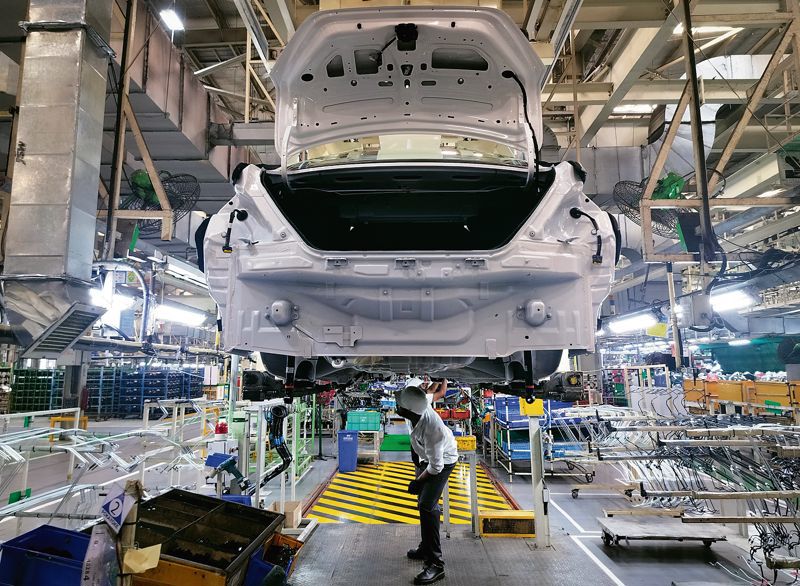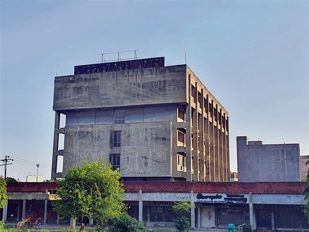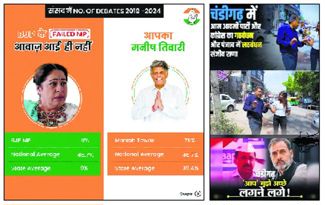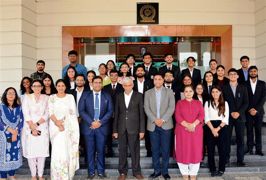
INDISPENSABLE: The key drivers of economic growth are the contributions of the industrial, agriculture and services sectors to the gross GDP. Reuters
Krishna Raj
Prof, Institute for Social & Economic Change, Bengaluru
INDIA aspires to become a high-income, developed country (Viksit Bharat) by 2047. In pursuance of this comprehensive vision plan, the economy needs to wield phenomenal power to ratchet up the GDP growth rate and climb the commanding heights in 23 years from the current nominal GDP of $3.73 trillion to a whopping $30 trillion. In practical terms, the world’s fifth-largest economy should show an extraordinary incremental growth of $1.14 trillion every year to reach the pinnacle of $26.14 trillion in two decades. If the growth rate of 7.6 per cent is taken into consideration, the GDP rose from Rs 38.78 lakh crore to Rs 41.74 lakh crore during the past year (2023-24). The increase is just Rs 2.96 lakh crore, against the Rs 81 lakh crore needed. This is too little to attain the ‘developed country’ tag by 2047, and it requires more than double the GDP growth rate at 15 per cent annually. The GDPs of the US, China, Germany, Japan and India are $26.95 trillion, $17.78 trillion, $4.43 trillion, $4.23 trillion and $3.73 trillion, respectively. Their per capita GDPs are approximately $80,410, $12,540, $52,820, $33,950 and $2,610, respectively. India is currently in the group of lower-income countries. It needs to tread a long road to reach various stages of low income, middle income and high income in 23 years. In order to get the ‘high-income country’ tag, India’s per capita GDP should exceed $12,055 by 2047.
The key drivers of economic growth are the contributions of the agriculture, industrial and services sectors to the gross GDP. The services sector dominated with a share of 53.34 per cent, while the industrial and agriculture sectors contributed 28.25 per cent and 18.42 per cent, respectively, to the GDP in 2023. However, in the case of top economies of the world, such as US, China, Japan and Germany, the services and industry sectors contribute 95-98 per cent together to their GDP basket, and the dependence on agriculture is hardly 1 per cent, except 6.9 per cent in the case of China. India’s GDP contribution from these two sectors is 82 per cent. One of the stumbling blocks to India’s growth aspirations is the slow and sluggish growth of the agriculture and industrial sectors. Another distinctive feature of a developed economy is that it exports more goods and services than it imports. Despite the fact that India’s economy is one of the fastest growing major economies in the world, its high dependence on imports is its main shortcoming. The current account deficit is as high as 2 per cent of the GDP. The US, China, Japan and Germany, on the other hand, have a current account surplus of 5-10 per cent of their GDP. The FDI inflows have fallen drastically in recent years, and the debt has increased to $625 billion (18.61 per cent of the GDP). These macroeconomic figures clearly show that India’s economy needs to improve its export performance, reduce imports, attract a high inflow of FDI to key sectors and develop the industrial sector to realise its grand dream.
India’s economy continues to grow without the creation of adequate jobs for the youth, and this has aggravated income and wealth inequality. It has produced rapid degradation of natural resources and the environment in recent years. The rate of unemployment among the youth aged 20-24 years and those aged 25-29 years is 44.49 per cent and 14.33 per cent, respectively. The income and wealth share of the top 1 per cent of the population rose to 22.6 per cent and 40.1 per cent, respectively, in 2022-23. The per capita availability of water has drastically fallen to 1,486 cubic metres. Meanwhile, India overtook China to become the world’s most populous country, with a population of 1.42 billion. It means 17.5 per cent of the world’s population is sharing just 2.4 per cent of the land. These dynamic changes on the socio-economic and environmental fronts have limited India’s growth prospects. Further, the structural transformations in terms of economic policies and labour laws have favoured corporations and financial institutions. The poor and the youth lack a level playing field in competitive job markets. India’s human and environmental indices and rankings in the world are worsening. The country’s agriculture and industrial sectors are globally not competitive in terms of production and productivity.
In furtherance of transforming India into a developed nation, the government has proposed a six-pronged strategy —structural transformation, improving competitiveness, financial and social inclusion, reforms in governance, the technology-led Green Revolution 2.0 and labour market reforms. These policies are supposed to improve resource efficiency and sector-wise productivity to accelerate growth, thereby creating jobs and reducing poverty.
However, India’s goal raises many fundamental questions. Does the policy reflect the aspirations, ethos and values of the people of India? Are the growth of per capita income and GDP the only indicators that will make India a developed country by 2047? Is the high growth rate ecologically sustainable, given the plunder of natural resources? Does the high growth pattern distributes the income rightfully among the people? All these beg the question: development at what cost and whose cost?
Many experts observe that India needs to tread a different developmental path rather than desperately following the one pursued by Western economies or by China, given India’s diverse demographic, social, economic and environmental conditions. Therefore, the nation needs to realise its inherent macroeconomic strengths and weaknesses to gain the ‘developed country’ status by 2047. The government immediately needs to review its policies of economic growth for course correction and achieve sustainable and inclusive development. The world is desperately struggling amid the increasing incidence of climate change due to myopic and destructive economic policies. What India wants is development that is sustainable and has nature and humanity at its core.
Join Whatsapp Channel of The Tribune for latest updates.



























